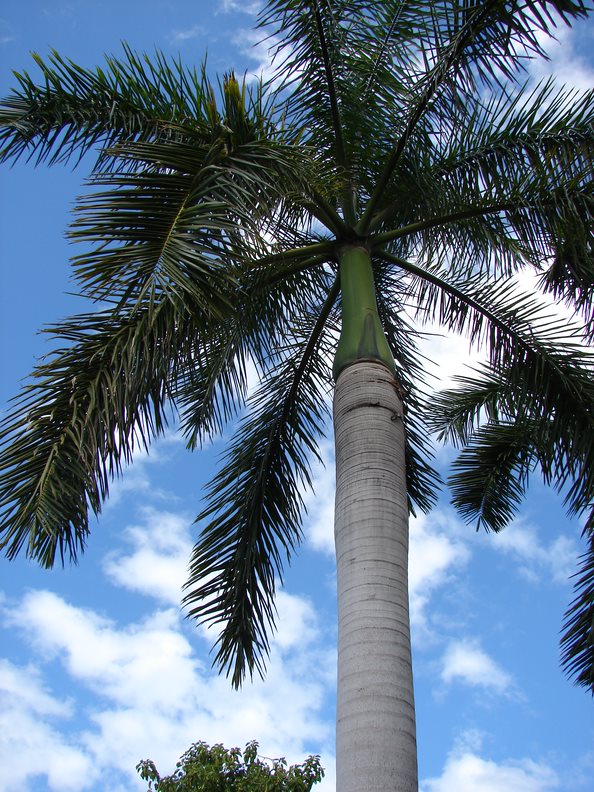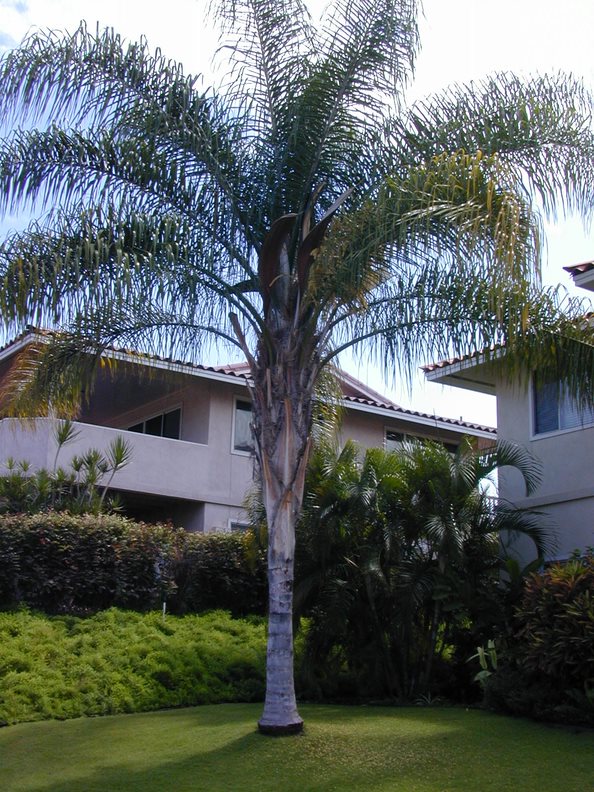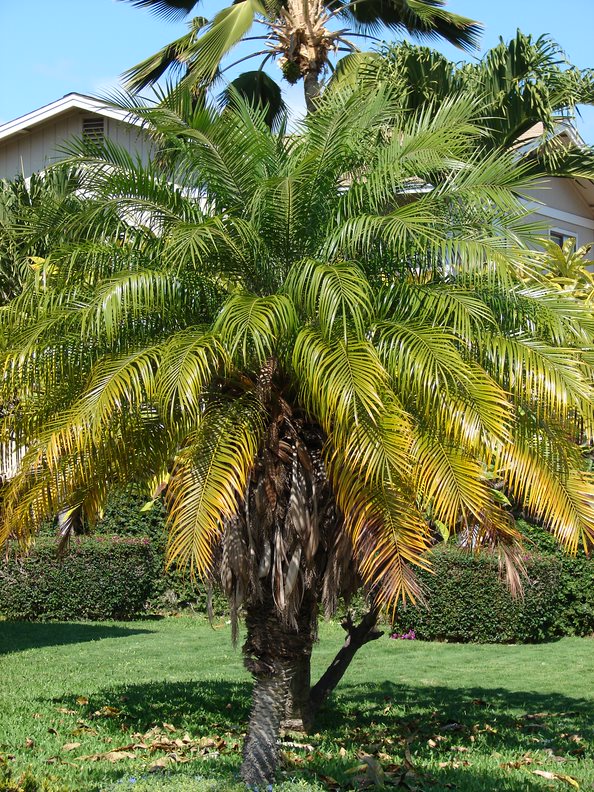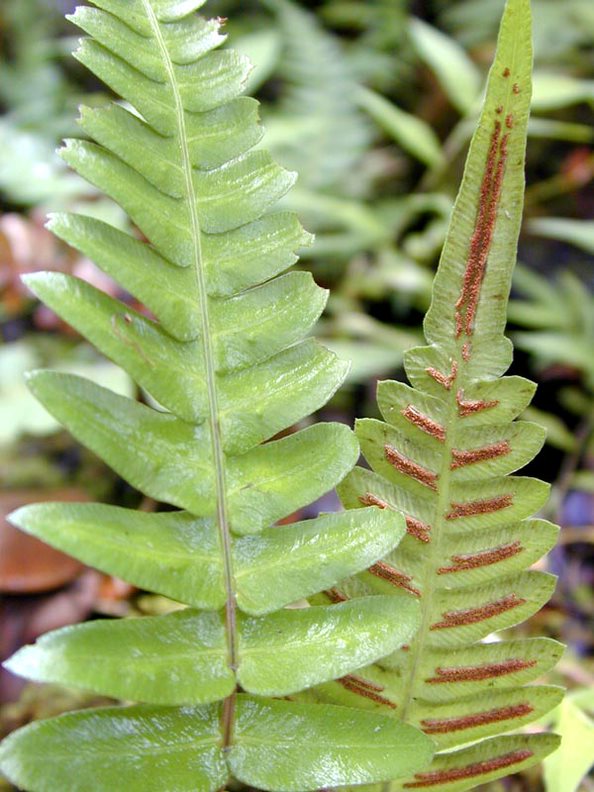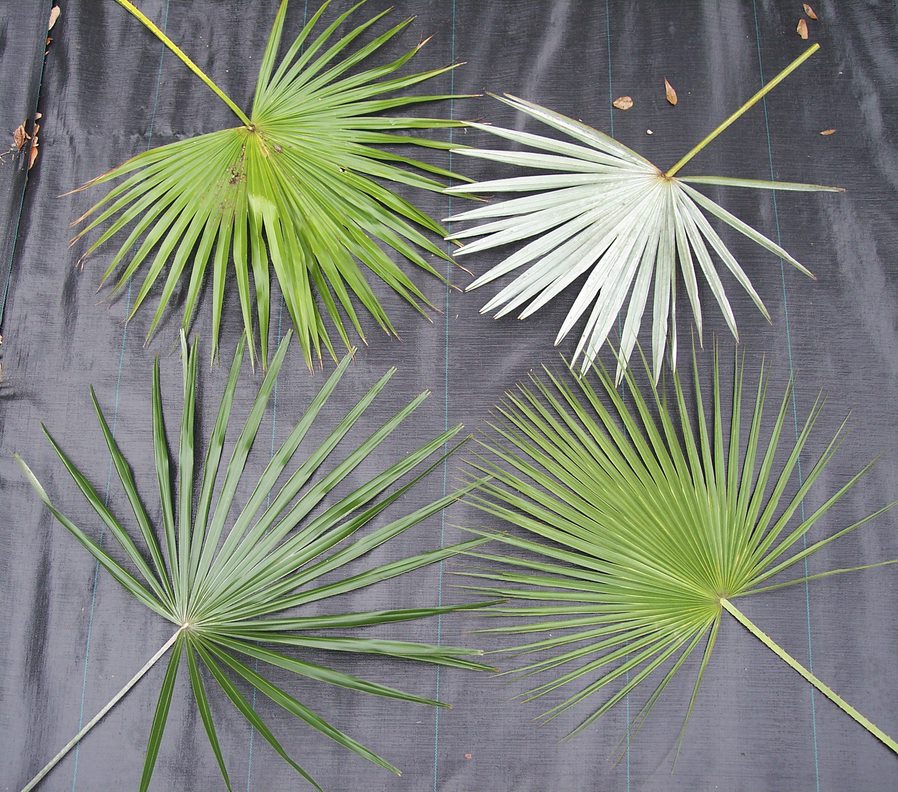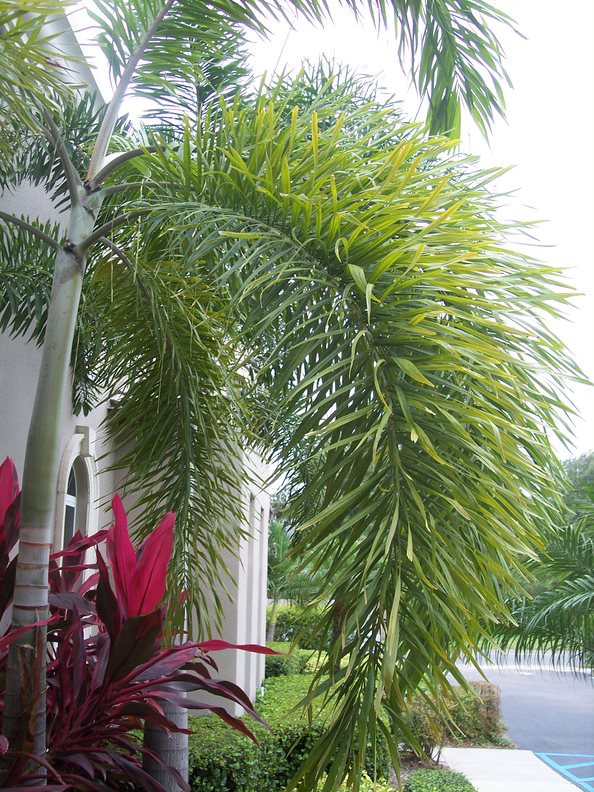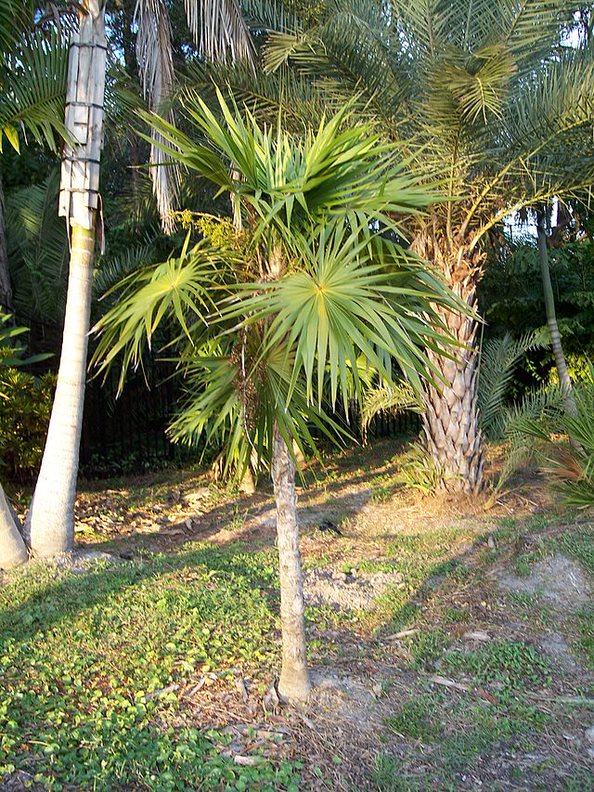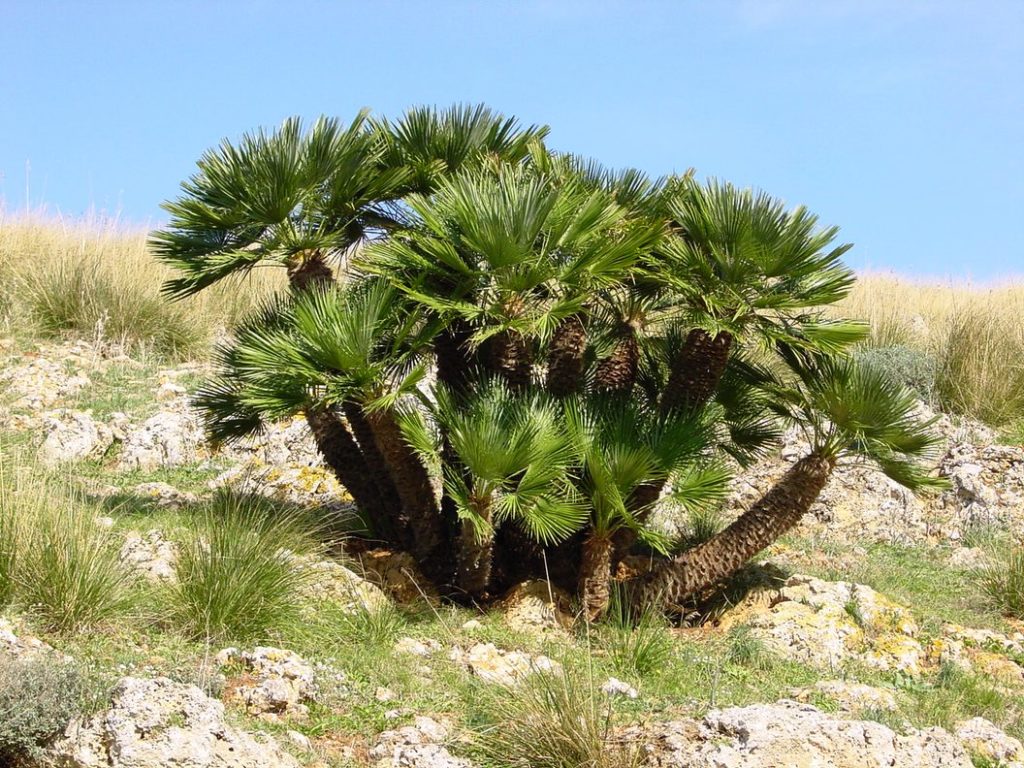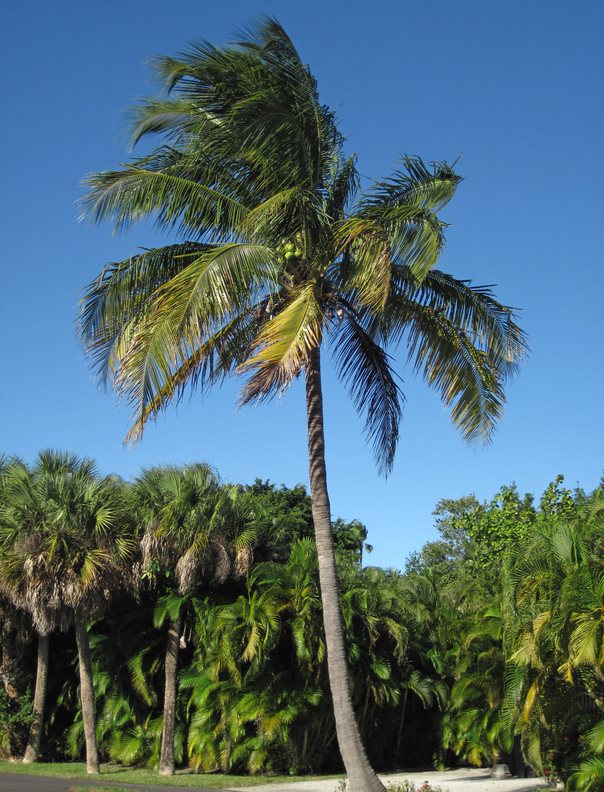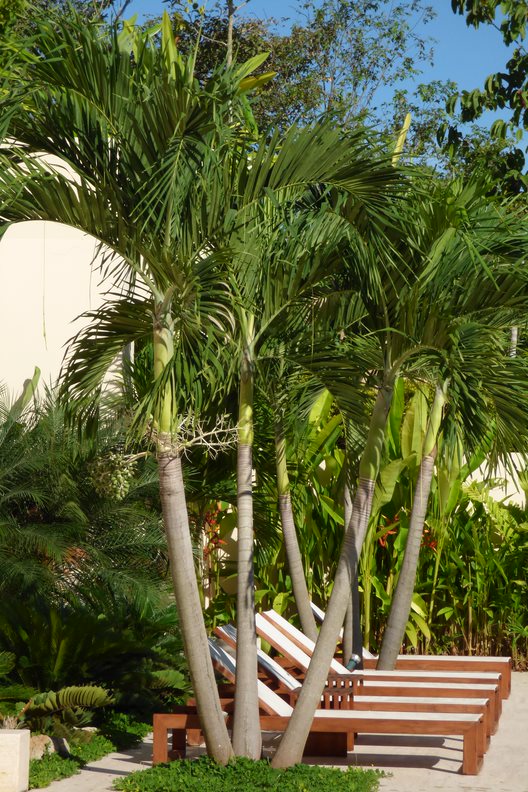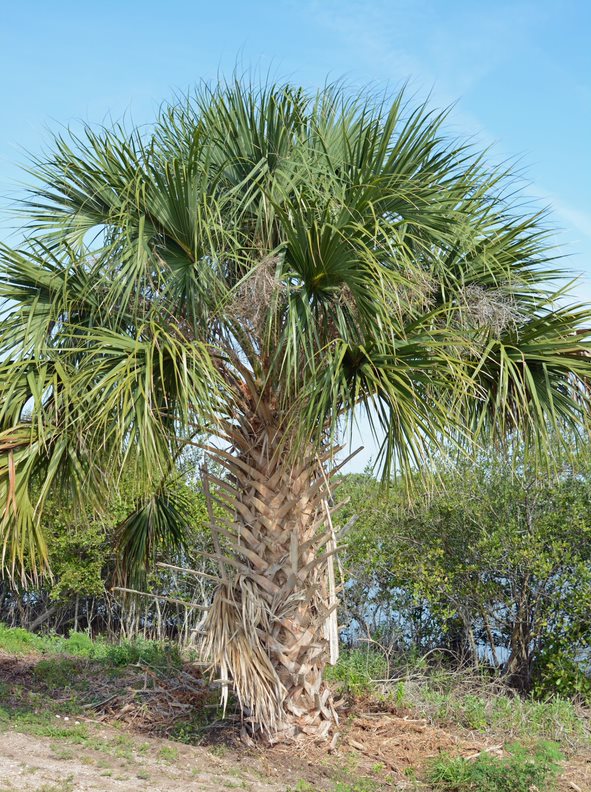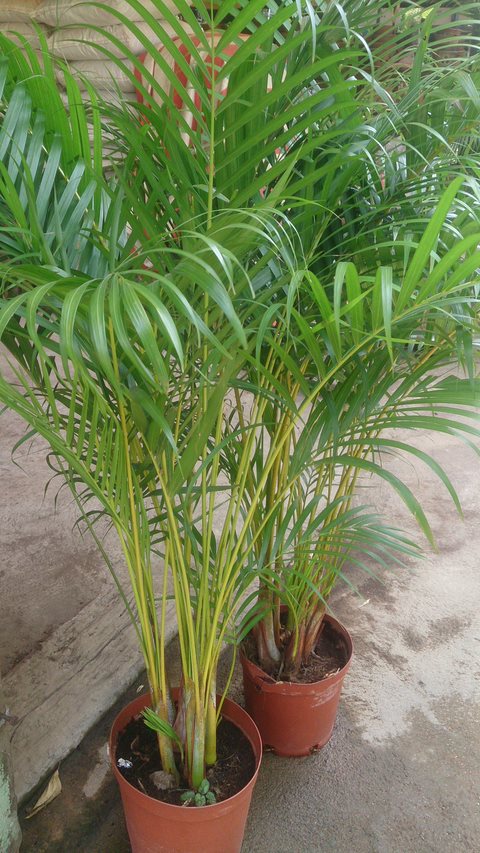Palm trees are a familiar sight in Southwest Florida. Palms are common landscape plants placed along boulevards, in neighborhoods, and next to businesses. There are many different varieties of palms used in landscaping. As we get ready to launch Project Stay Planted on April 22 (Earth Day!), I am going to cover just a few of the most common palms you will see.
First, though, a couple of important definitions: Most palm fronds have either pinnate or palmate leaves. Pinnate leaves have leaflets arranged on either side of a stem, typically in pairs opposite of each other. A fern is a good example of simple pinnate leaves. Palmate leaves have leaflets arising from a common point, often in the form of a fan. Fan palms have palmate leaves.
Scroll to the end for photo examples of each of these!
Royal Palm (Roystonea regia)
The royal palm is perhaps the most easily recognizable of all palm trees. You can find native royal palms lining wide boulevards and in residential areas. It is a solitary palm with large pinnate leaves that can be up to 13 feet long. The royal palm is characterized by a smooth grey trunk with a bright green crown-shaft. Adults range from 50 to 80 feet tall. This palm is a popular landscape plant due to its height and clean, bootless look. A “boot” is the part of the palm frond that wraps around the trunk. For some palm species, like the native cabbage palm, this boot stays attached to the trunk after the frond falls off. On the royal palm, the boot is self-pruned by the plant shortly after the frond falls. The royal palm, found throughout Florida, Central America and the Caribbean, is used by a variety of animals as a nesting site and food source. The endangered Florida bonneted bat roosts in this palm and enjoys its fruit.
Foxtail Palm (Wodyetia bifurcata)
The foxtail palm looks like the royal palm but is smaller, topping off at 30 feet. It gets its name from the fronds, which resemble a fox’s bushy tail. Foxtail palms have what are called “plumose” leaves, meaning they have a feathery or plume-like appearance. This frond shape makes foxtails unique among palms. This plant is native to Queensland, Australia. While foxtails are frequently planted here in Southwest Florida, it is not adapted to our local conditions and often becomes nutrient–deficient. Local landscapers and horticulturalists have started to move away from using this plant.
European Fan Palm (Chamaerops humilis)
The European fan palm is one of only two palm species native to continental Europe, the other being the Cretan date palm (Phoenix theophrasti). It is native to central and southern Italy, Spain, Portugal, southern France, and northwest Africa. It is short, growing between 10-20 feet tall and often grows tightly together in clusters. The leaves are palmate and shaped like a fan, hence the name. This palm is not a commonly used landscape plant anymore, but you can still find it out there.
Queen Palm (Syagrus romanzoffiana)
The queen palm, also called the cocos palm, is one of the most popular ornamental palms in the world. It is fast–growing and reaches a height of 50 feet at maturity. This is a solitary palm with large pinnate leaves and bright yellow fruit. In its native South America, the queen palm is used by a wide variety of animals. Birds, squirrels, tapirs, foxes, possum, caterpillars, and moths all rely on this tree as a food source and shelter. Unfortunately, this plant is quite invasive in Southwest Florida and should not be planted here. However, you can still find queens in the region as the species was planted here extensively in the past.
Areca Palm (Dypsis lutescens)
The areca palm is one of the few palms that can be grown as a houseplant. Areca palms can be kept in small pots indoors or allowed to mature outside where they will reach up to 40 feet in height. This plant is native to Madagascar and is endangered in its native range. One of its threats is the harvesting of plants from the wild to support the horticulture trade. The fronds are arched and 6 to 10 feet in length. The fronds have distinct yellow leaf petioles. Petioles are the stalk that attach the leaf blade to the stem. It is a clumping palm that is often used as a screen or tall hedge. It can be easily mistaken for bamboo if you are not careful.
Pygmy Date Palm (Phoenix roebelenii)
The pygmy date palm is native to southern China. This is a great palm for indoor and outdoor use. The slow-growing tree tops off around 10 feet. It requires minimal maintenance, grows well in full sun to partial shade, and when planted in groups tends to curve toward each other gracefully. This plant is perfect for a home garden or lawn.
Christmas Palm (Adonidia merrilli)
The Christmas palm gets its name from the red fruit that starts to mature in December. This palm is native to the Philippines and has a smooth slender trunk and green crown-shaft like the royal palm. Christmas palms are fast growing and typically reach 10-20 feet when fully grown. This palm has sharp spines on its leaf petioles. This is a common landscape palm and is often planted in groups of three.
Coconut Palm (Cocus nucifera)
This list would not be complete without talking about the most recognizable palm of all, the coconut palm. This palm can grow up to 100 feet tall. This makes the coconut palm the tallest palm in this list. The coconut palm is easily recognized due to its fruit, the coconut, which is one of the largest seeds in the world. Every palm produces seeds, but only this species makes coconuts. Other palm seeds are usually much smaller in size. The coconut is not actually a nut but instead classified as a drupe or stone fruit. Other drupes include mangos, cherries, olives, plums, and peaches. The coconut can have a boot or bootless trunk. Sometimes the tree drops the boots early on; other times, it hangs on to them. If it does have boots, you’ll often see other plants, such as ferns or tillandsia, colonizing them. The coconut’s pinnate leaves are 10-20 feet long and have a distinct V shape to them.
It is a bit of a mystery as to where this palm originated. Historians believe it is closely tied to the early migrations of ancient people between Southeast Asia and Australia around 3500 to 2000 BC. Most modern studies place its origin somewhere in the area between Saudi Arabia and Australia. Regardless, the coconut palm now has a worldwide distribution. It can be found on every continent except Antarctica. Most of that distribution is from human activity, although some natural distribution has occurred. The coconut itself can float for months in the ocean and still germinate after washing ashore. There have even been accounts of coconuts collected off the coast of Norway, although where they entered the water is unknown.
Cabbage Palm (Sabal palmetto)
We cannot forget this palm. It is the state tree of Florida! The cabbage palm, also called the sabal palm, grows up to 65 feet tall. The leaves are palmate and quite large at 4-5 feet long and 5 feet wide. The leaves may sometimes become strongly curved through the middle and look arched. This palm keeps its boots for a long time after the leaves fall off. The rate of boot loss varies per individual, but it is common to see a cabbage palm keep its boots for months and even years after the leaves are gone. This plant is stately, well suited to a wide range of conditions in Florida, and highly recommended as a landscape plant. This plant has a long history of use with the Seminole tribe of Native Americans, who use the lumber and leaves to build shelters called chickees. The cabbage palm is also the source of “hearts of palm,” a vegetable harvested from the growing core of the plant, used in salads and other dishes.
Florida Thatch Palm (Thrinax radiata)
This native tree can be commonly seen planted along roadways and residential areas across South Florida. This species reaches an average height of 20 feet. It has large, palmate shaped leaves which are 4–5 feet wide and 2.5 feet long. The name “thatch” comes from the use of its fronds in thatched roofing. The fronds are used to make brooms, handicrafts, and food wrapping.
These are just a few of the palm trees that you may see around your neighborhoods. While learning to identify specific palms can be challenging at first, it quickly becomes fun as you begin to appreciate the sheer variety of palm species found here in Southwest Florida. Happy tree hunting!

